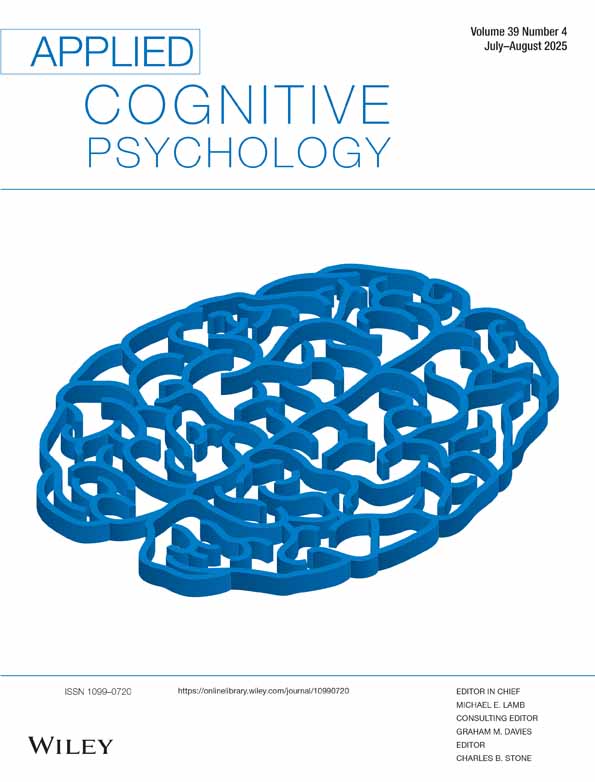Evidence for the differential impact of time and emotion on personal and event memories for September 11, 2001
Abstract
One week and six months following 9/11, University of Toronto students completed a questionnaire that assessed memory for that day's events. Questions assessed personal autobiographical information and event-related information. Recently, Pezdek (2003) reported that ‘flash-bulb memories’ for event and autobiographical information varied with the extent of participant involvement: as emotional involvement increased, event memory improved whereas autobiographical memory declined. This dichotomy was further explored in this study with a Canadian sample, a group expected to be less personally involved in the events. In accordance with Pezdek's hypothesis, the consistency of recall was better for autobiographical information than for event information. The two types of memories were also differentially affected by (1) emotion: event memory was better for those who experienced higher levels of emotion, whereas autobiographical memory was unaffected by emotion; and (2) the passage of time: over the six-month interval, the accuracy of event memory declined, whereas the number of personal information details actually increased. Copyright © 2003 John Wiley & Sons, Ltd.




